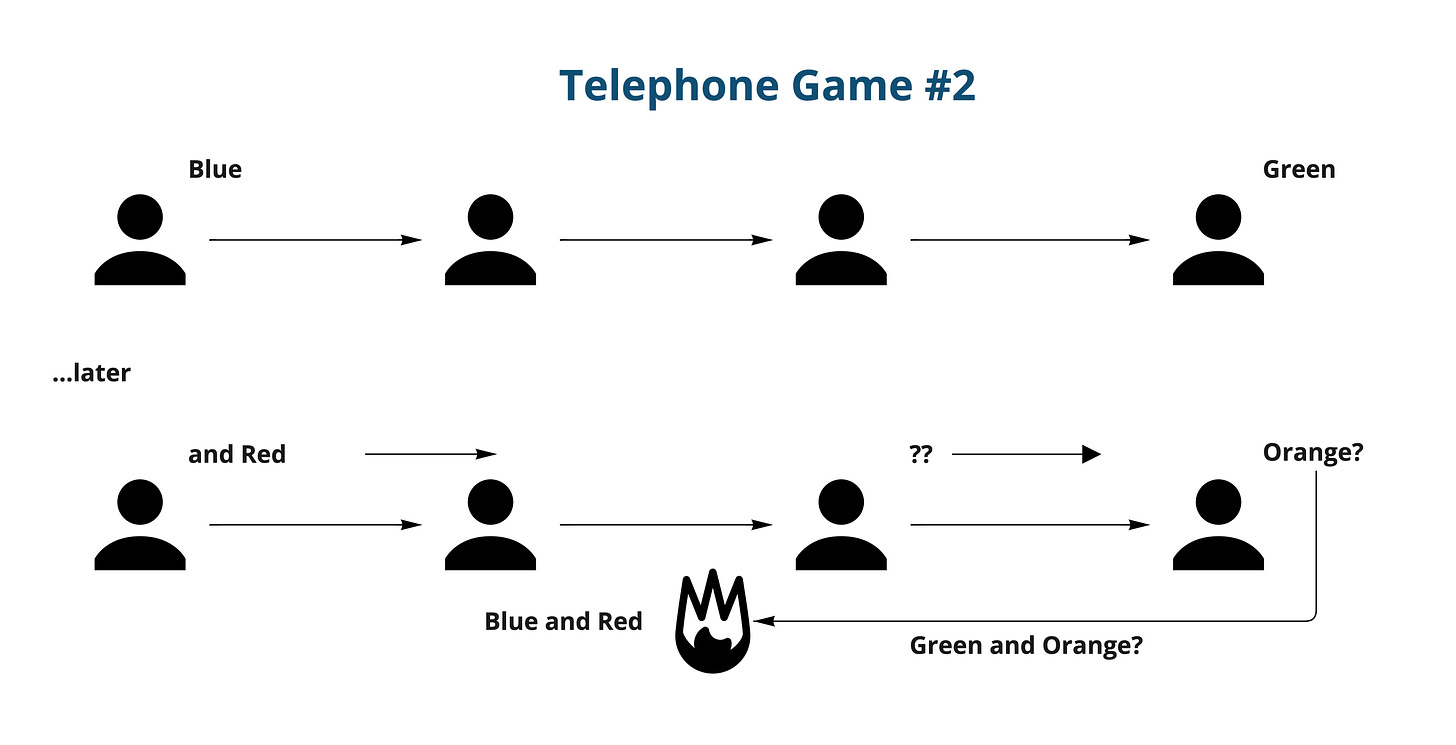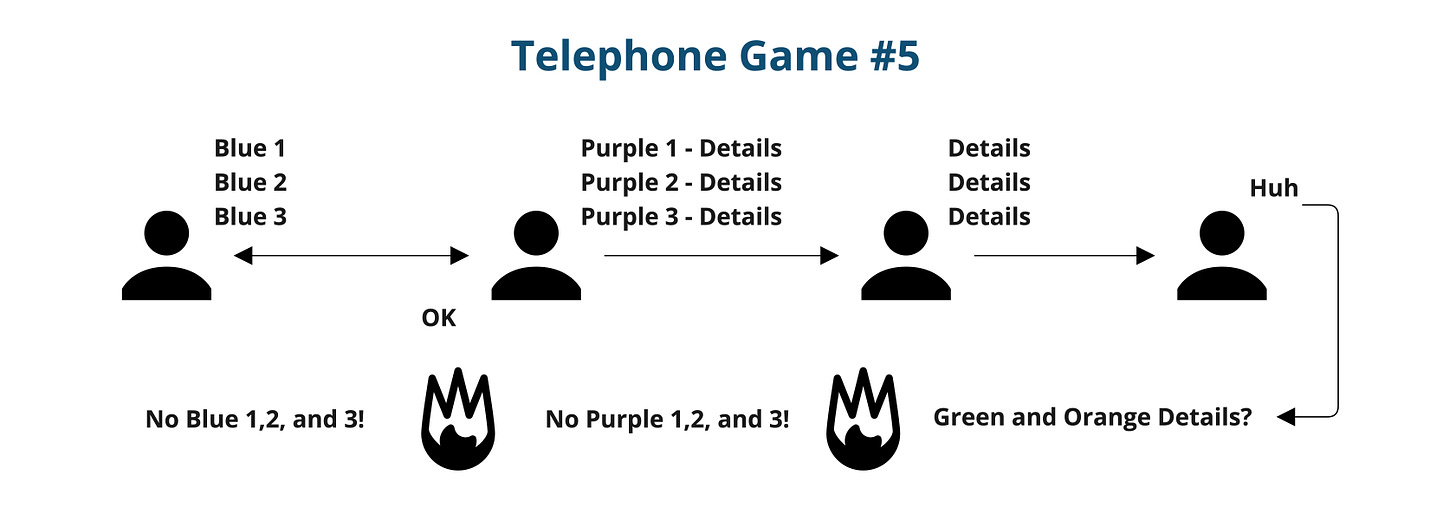This week I am going to share Telephone Game diagrams!
Recognize any? If you enjoy this post, consider sharing it.
Telephone Game #1
The old standard. Blue becomes Green by the time it passes through a couple people.
Telephone Game #2
A couple days later, Red enters the picture. Blue and Red become Green and Orange. Information flows and clashes in both directions. The important detail here is that it is never just one bit of information flowing, and ideas merge.
Telephone Game #3
Priority levels get skewed. Important becomes “code red”. Or, important becomes something we’ll revisit in a couple weeks.
Telephone Game #4
With each hop, information becomes more prescriptive (and gets skewed). No one wants to be just a pass-through, so people tend to shape the information. Three high level bullets becomes a bunch of detailed tasks.
Telephone Game #5
As with #2, we need to consider what happens when the questions start flowing back upstream. Confusion everywhere.
Telephone Game #6
Three people talk, but they don’t get in the same room. Blue, Red, and Green, becomes Purpose, Brown, and Turquoise.
Telephone Game #7
Someone goes on a vision quest and converges on Blue. But Why? Without going on that journey, it is hard to understand the context.
Telephone Game #8
The flip-side of #7 is that someone starts a vision quest and shares information early on. Before you know it, Top Priority Brown.
Telephone Game #9
Information gets watered down as it moves up the ranks.
Telephone Game #10
For various reasons, people feel uncomfortable sharing direct feedback to their manager. So they fork information, which ends up in ambiguous information reaching the people who can address the problem. But they can’t. Because of ambiguous information.
In the mood to watch a fun video? Here’s a video on decision drift (related to the this topic).















Fascinating!
Thanks for sharing John. The video at the end was very effective at capturing the essence of this common problem.